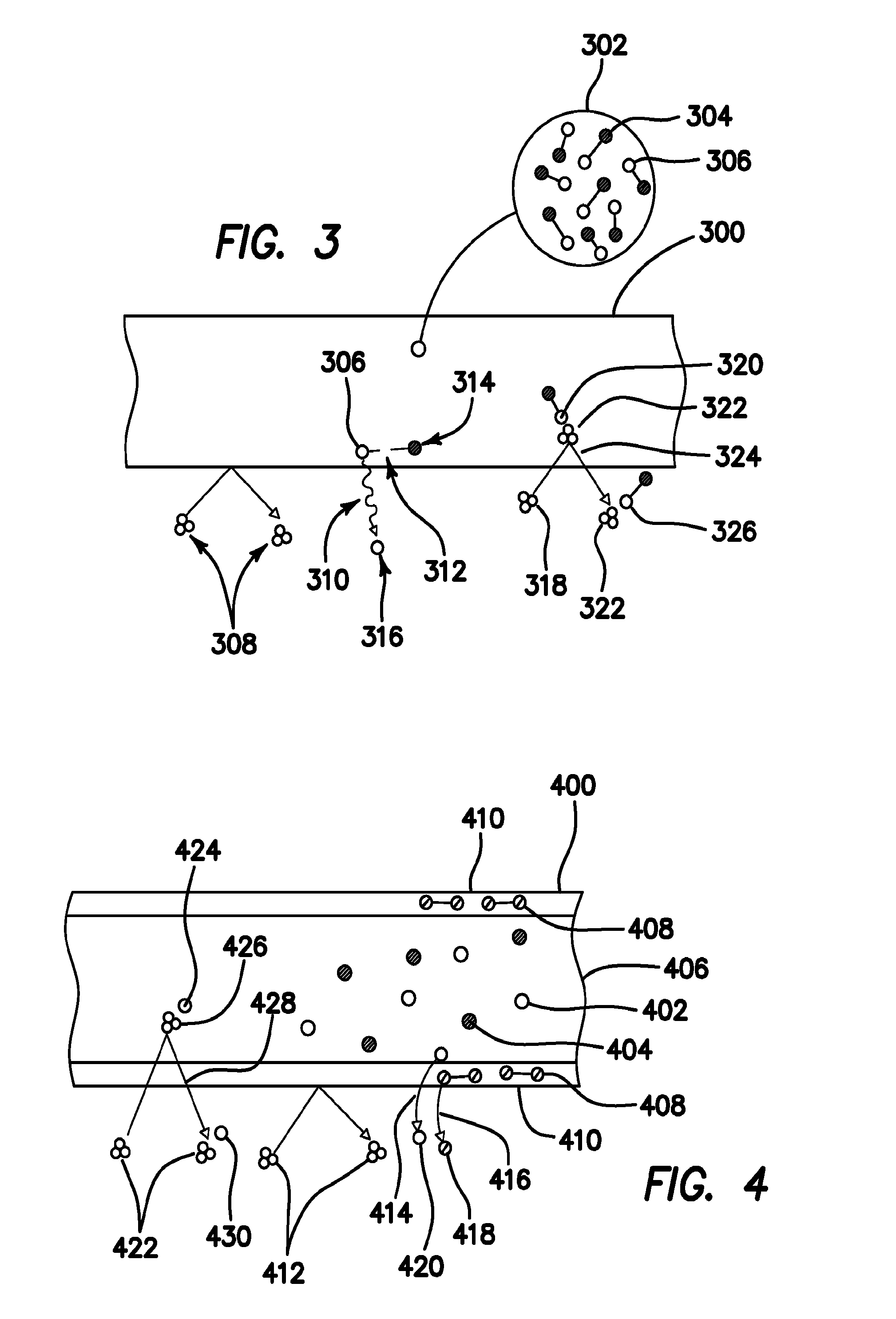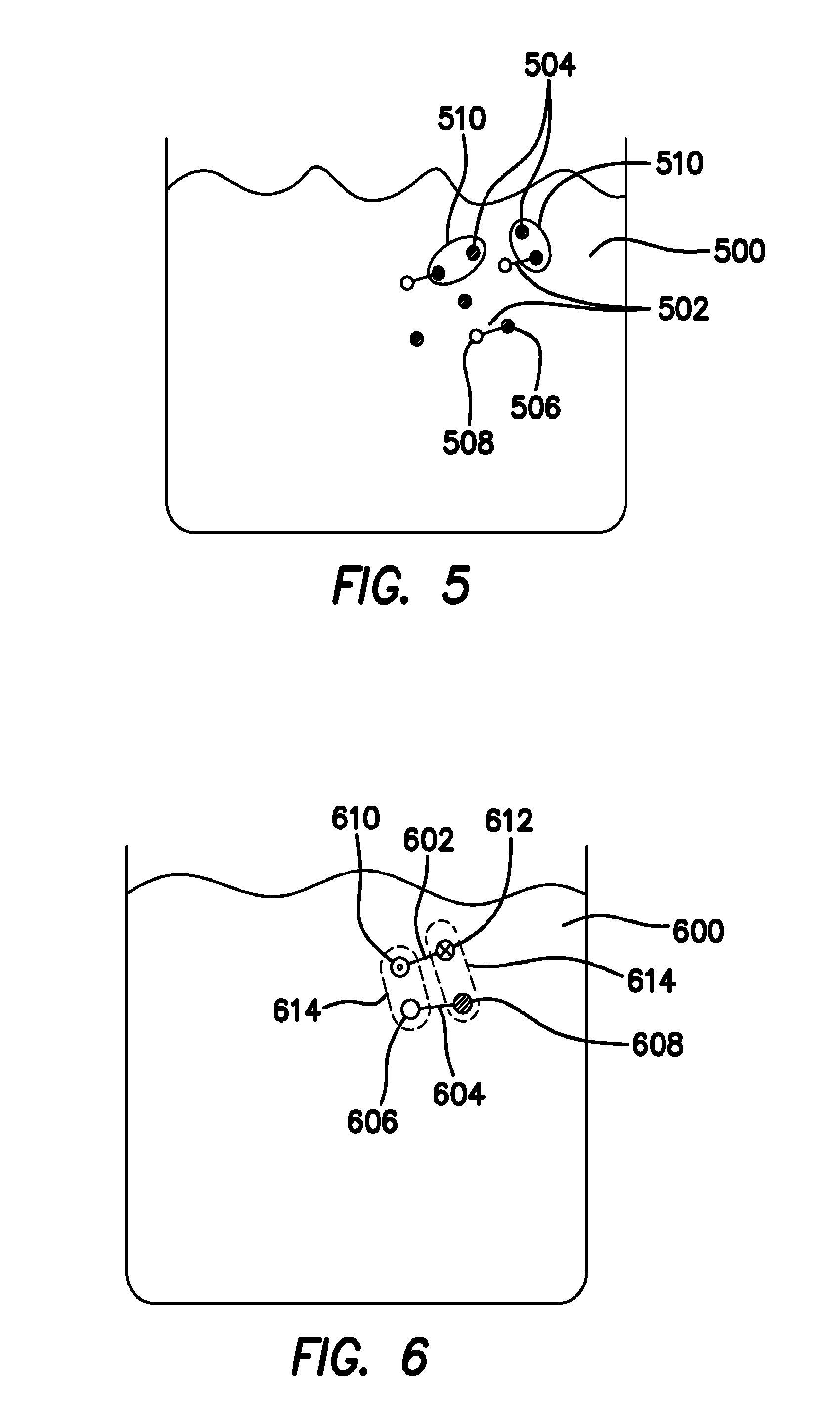Medical Device Comprising Boswellic Acid
a boswellic acid and medical device technology, applied in the field of plant compositions with novel pharmacological properties, can solve the problems of low biological efficacy and achieve excellent pharmacological effects
- Summary
- Abstract
- Description
- Claims
- Application Information
AI Technical Summary
Benefits of technology
Problems solved by technology
Method used
Image
Examples
example 1
Preparation of a Polyester Diisocyanate
[0184]In this example a castor-derived hydroxyl-terminated ricinoleate derivative is used as the diol. One equivalent of polycin D-265 (212 g) is combined with 2 equivalent of toluene diisocyanate (174 g) at room temperature (22° C.). The mixture is stirred at 100 revolutions per minute and the temperature monitored. The mixture will begin to heat up by exothermic reaction and no heat is to be applied to the reactor until the temperature in the reactor ceases to rise. Then the mixture temperature should be increased in 5° C. increments per ½ hour until the mixture reaches 60° C. The reaction should be continued until the % NCO=10.9%. The target % NCO is reached when every hydroxyl group in the mixture is reacted with an NCO group. Ideally, the result is a single diol endcapped with two diisocyanates. This outcome can be enhanced by slow addition of the diol to the diisocyanate. The addition should be in 10 g increments, added when the exotherm ...
example 2
Preparation of a Polyether Diisocyanate
[0188]In this example a polyether hydroxyl-terminated copolymer of 75% ethylene oxide and 35% propylene oxide is used as the diol. One equivalent of UCON 75-H-450 (490 g) is combined with 2 equivalent of toluene diisocyanate (174 g) at room temperature (22° C.). The mixture is stirred at 100 revolutions per minute and the temperature monitored. The mixture will begin to heat up by exothermic reaction and no heat is to be applied to the reactor until the temperature in the reactor ceases to rise. Then the mixture temperature should be increased in 5° C. increments per ½ hour until the mixture reaches 60° C. The reaction should be continued until the % NCO=10.9%. The target % NCO is reached when every hydroxyl group in the mixture is reacted with an NCO group. Ideally, the result is a single diol endcapped with two diisocyanates. This outcome can be enhanced by slow addition of the diol to the diisocyanate. The addition should be in 10 g incremen...
example 3
Preparation of a Polyester Triisocyanate
[0190]In this example a castor-derived hydroxyl-terminated ricinoleate derivative is used as the triol. One equivalent of polycin T-400 (141 g) is combined with 2 equivalent of toluene diisocyanate (174 g) at room temperature (22° C.). The mixture is stirred at 100 revolutions per minute and the temperature monitored. The mixture will begin to heat up by exothermic reaction and no heat is to be applied to the reactor until the temperature in the reactor ceases to rise. Then the mixture temperature should be increased in 5° C. increments per 2 hour until the mixture reaches 60° C. The reaction should be continued until the % NCO=13.3%. The target % NCO is reached when every hydroxyl group in the mixture is reacted with an NCO group. Ideally, the result is a single diol endcapped with two diisocyanates. This outcome can be enhanced by slow addition of the diol to the diisocyanate. The addition should be in 10 g increments, added when the exother...
PUM
| Property | Measurement | Unit |
|---|---|---|
| Fraction | aaaaa | aaaaa |
| Fraction | aaaaa | aaaaa |
| Composition | aaaaa | aaaaa |
Abstract
Description
Claims
Application Information
 Login to View More
Login to View More - R&D
- Intellectual Property
- Life Sciences
- Materials
- Tech Scout
- Unparalleled Data Quality
- Higher Quality Content
- 60% Fewer Hallucinations
Browse by: Latest US Patents, China's latest patents, Technical Efficacy Thesaurus, Application Domain, Technology Topic, Popular Technical Reports.
© 2025 PatSnap. All rights reserved.Legal|Privacy policy|Modern Slavery Act Transparency Statement|Sitemap|About US| Contact US: help@patsnap.com



